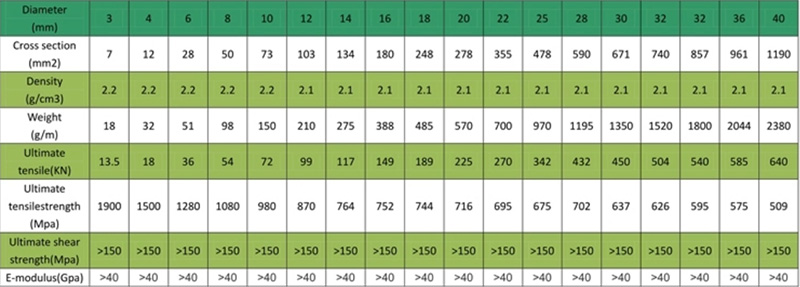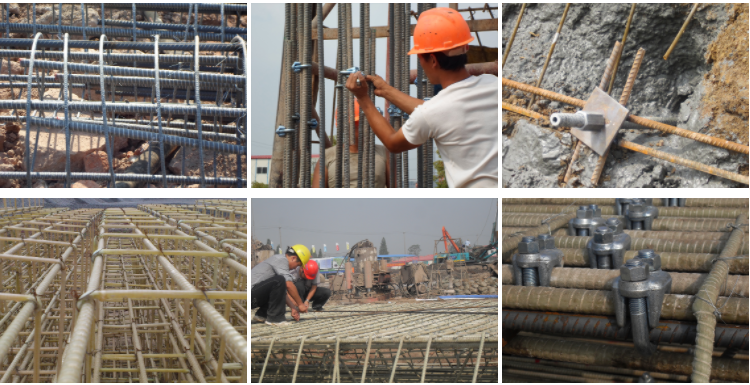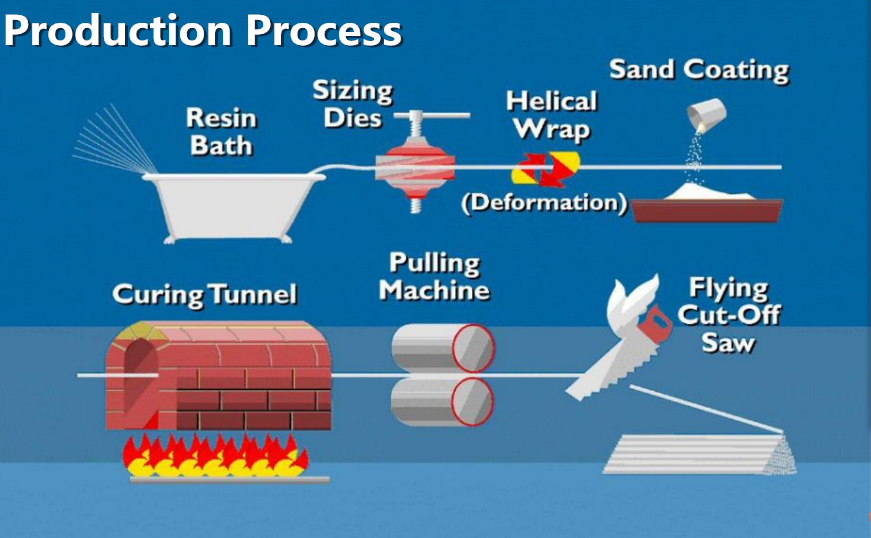

GRP/FRP(Fiberglass Reinforced Polymer) Rebar is a spiral wrapped structural reinforcing rod made from a combination of fiberglass roving and resin. As a reinforcing material, glass fiber reinforcement is a composite material made of synthetic resin as the matrix material and mixed with an appropriate amount of auxiliary agents, compared with ordinary steel rebars, it has many advantages.
FRP(Fiberglass Reinforced Polymer) Rebar is a spiral wrapped structural reinforcing rod made from a combination of fiberglass roving and resin. As a reinforcing material, glass fiber reinforcement is a composite material made of synthetic resin as the matrix material and mixed with an appropriate amount of auxiliary agents, compared with ordinary steel rebars, it has many advantages. Its absolute anti-corrosion performance, thermal insulation, and tensile resistance. The characteristics of high strength, easy cutting, and light weight play an important role in all major civil engineering projects. FRP Rebar has been developed as a non-corrosive alternative to steel in concrete reinforcement and is suitable for any structural or architectural application where a material that is corrosion resistant, lightweight or non-conductive is required.
Specification

Note: The size can be customized according to customer requirements.

Features of FRP rebar:
1. High tensile strength: The tensile strength of glass fiber reinforcement is better than that of ordinary steel bars, which is 20% higher than that of steel bars of the same specification, and has good fatigue resistance.
2. Light weight: The quality of glass fiber reinforcement is only 1/4 of the same volume of steel, and the density is between 1.5 and 1.9 (g/cm3).
3. Strong corrosion resistance: corrosion resistance of chemicals such as acid and alkali can resist the corrosion of chloride ions and low pH solutions, especially the corrosion resistance of carbon compounds and chlorine compounds.
4. Strong material binding force: The thermal expansion coefficient of glass fiber reinforcement is closer to cement than steel, because glass fiber reinforcement and concrete have stronger binding force.
5. Strong designability: The elastic modulus of the glass fiber ribs is stable, the size is stable under thermal stress, and the bending and other shapes can be heat-formed arbitrarily, and the safety performance is good. There will be no sparks when colliding with metal.
6. Strong magnetic permeability: The glass fiber reinforcement is a non-magnetic material, and it is not necessary to demagnetize the non-magnetic or electromagnetic concrete components.
7. Convenient construction: The glass fiber reinforcement can produce various standard and non-standard parts with different sections and lengths according to user requirements. Non-metallic tension bands can be used for on-site binding, which is simple to operate.
Application of FRP rebar:
At present, glass fiber reinforced steel can be widely used in highways, bridges, airports, wharfs, stations, water conservancy projects, underground projects and other fields;
Suitable for corrosive environments such as sewage treatment plants, chemical plants, electrolytic cells, manhole covers, coastal defense projects, etc.;
Applied in many specific engineering projects, including tunnel engineering, foundation pit and slope support, anti-corrosion engineering, anti-electromagnetic interference engineering, brick-concrete structure reinforcement engineering;

Accessories of FRP rebar:
1. Rebar : the important construction of the assembly, plays a major role in the anchor and support.
2. The head of the anchor drill: barb can be bolt positioning in the drilled holes, the middle rod body good.
3. Coupling: easy to manage, unlimited application range.
4. Anchor plate : bear greater stress of surrounding rock.
5. Nut: the surrounding rock stress concentrated on the pad.

Production process

Packing and shipping

Related Products: FRP Pipe, FRP Water Tank, FRP Electrolytic Cells, Underground diesel tank
